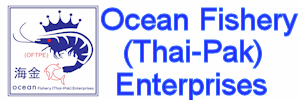Europêche
- Association of national
organisations of fishing enterprises in the European Union.
European Commission - Fisheries - The Common Fisheries
Policy (CFP) is the European Union's instrument for the management
of fisheries and aquaculture. It was created to manage a common
resource and to meet the obligation set in the original Treaties of
the then European Community. Because fish are a natural and mobile
resource they are considered as common property. In addition, the
Treaties which created the Community stated that there should be a
common policy in this area, that is, common rules adopted at EU
level and implemented in all Member States.
European Association of Fish Producers’ Organisations (EAPO)
- European Association of Fish Producers Organisations
Sweden
Government Department of Agriculture, Forestry and Fisheries
- The overall goal of the new Common Fisheries Policy (CFP) is
sustainable exploitation that takes into account economic,
environmental and social perspectives. The subject area Agriculture,
forestry and fisheries also includes issues concerning animals and
foodstuffs.
The North Sea Commission Fisheries Partnership was founded
to promote co-operation between scientists and fishers in monitoring
and managing fisheries in the North Sea.
Fishery and Aquaculture Country Profile for Sweden
- aquatic species caught by country or area, by species items, by
FAO major fishing areas, and year, for all commercial, industrial,
recreational and subsistence purposes. The harvest from mariculture,
aquaculture and other kinds of fish farming is also included.
National Food
Administration - The NFA has the task of protecting the
interests of the consumer by working for safe food of good quality,
fair practices in the food trade, and healthy eating habits. Fair
practices in the food trade imply that the consumer can rely on the
labelling as regards, for example, the composition, weight, keeping
qualities and origin of the food.
Federation of
Fishing Rights Owners - Sweden
This is an association working on behalf of hundreds of thousands of
people who own fishing rights in Sweden. Half of Sweden´s almost two
thousand fishery conservation areas are members of the federation,
as are municipalities, companies, the church and private persons.
Each fishery conservation area has
anything from just a few to several thousand owners. Fishing rights
can be owned by private persons, companies, municipalities, the
church or the government. Fishing rights are frequently collective,
with several properties sharing the same fishing water.
More than 9% of Sweden is made up of lakes. More than nine percent
of the surface of Sweden is made up of lakes. To this we can add the
Swedish coastline with its myriad islands and all the brooks,
streams and rivers that criss-cross the country.
Private fishing rights occur in all lakes, waterways and along the
coastline. Fishing rights in Sweden are connected to properties.
When agricultural land and forests were parcelled up, fishing rights
frequently remained collective and undivided and so fishing rights
can be either collective or divided.
Divided fishing rights mean that fishing within a certain area
belongs to a single property. Private fishing rights exits in all
Swedish lakes and waterways and along our coasts. In the five
largest lakes and along the coastline anyone can fish anywhere
outside the boundaries of fishing rights belonging to private
properties.





